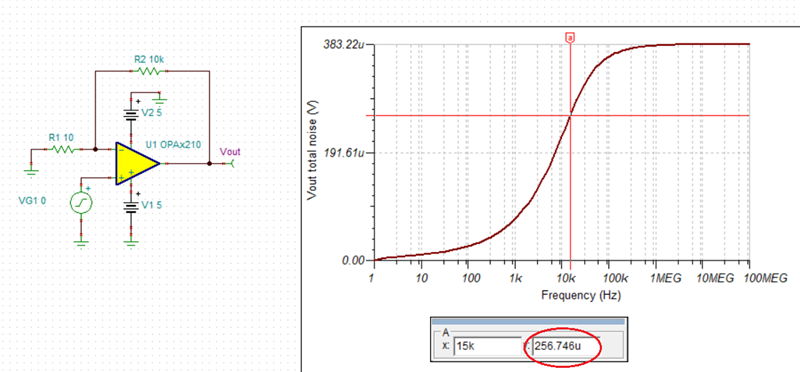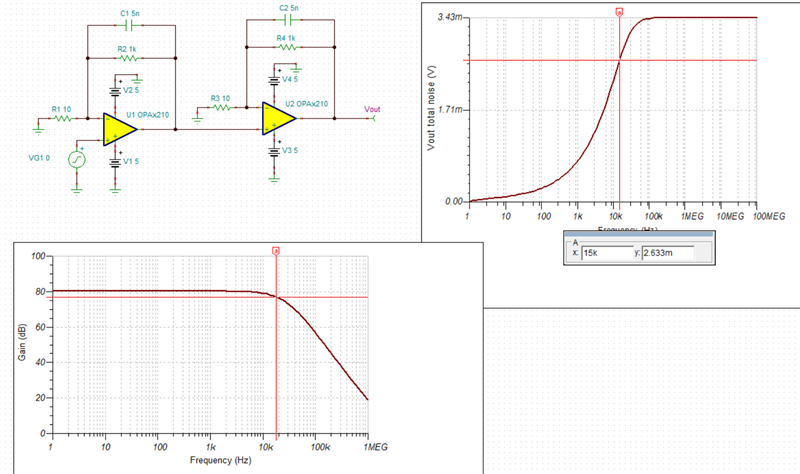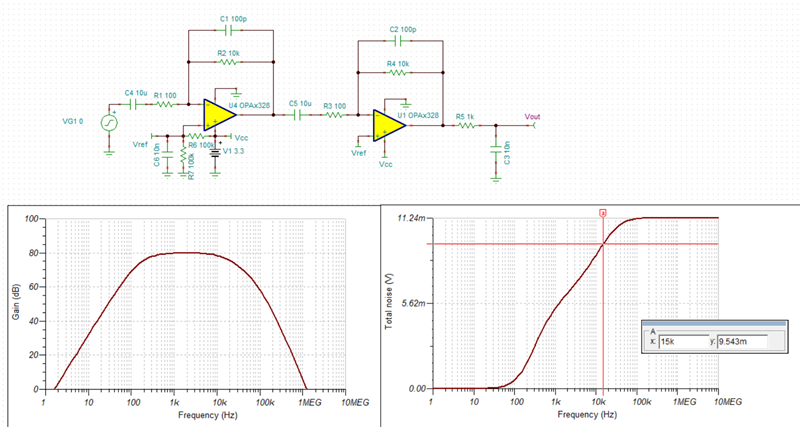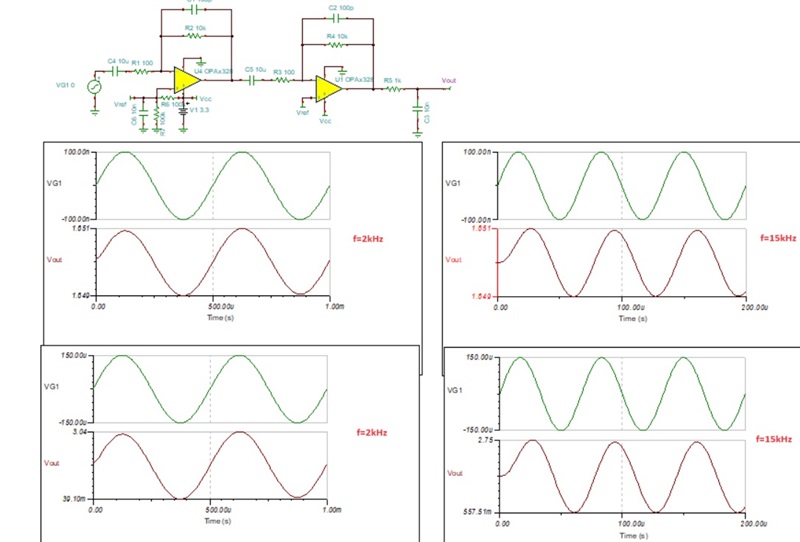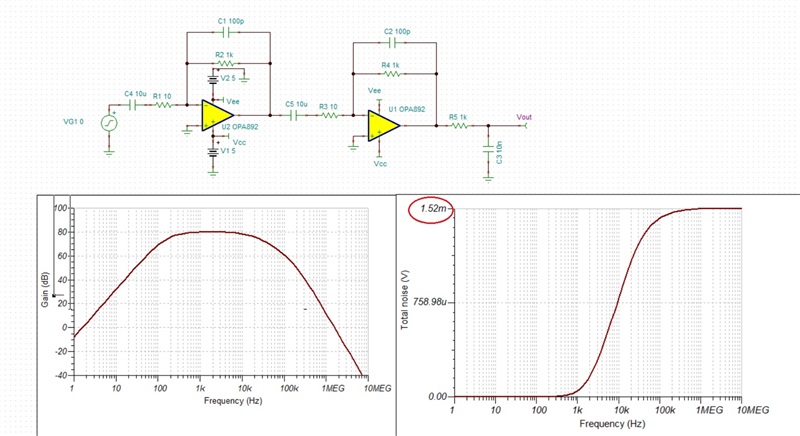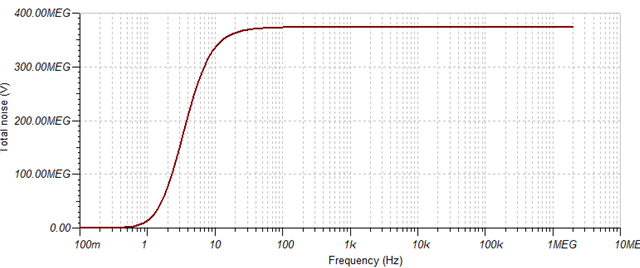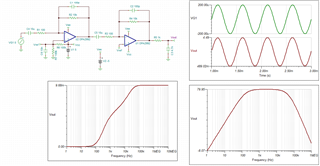Other Parts Discussed in Thread: OPA2328, OPA892, OPA992, OPA2992
Hi TI Design Support,
I have a sinusoidal and time varying signal which is in range of tens of nV to hundreds of microvolts, which I need to amplify to range of 0-3.3V, the environment is noisy, and the signal will be hidden in the noise. Can TI suggest me reference design or provide a design support for the same. My calculation says a gain of 100000 is needed, which may not be possible with single op-amp stage. The frequency of signal is 2KHz to 15 KHz. Please suggest and looking forward to discussion with TI.


